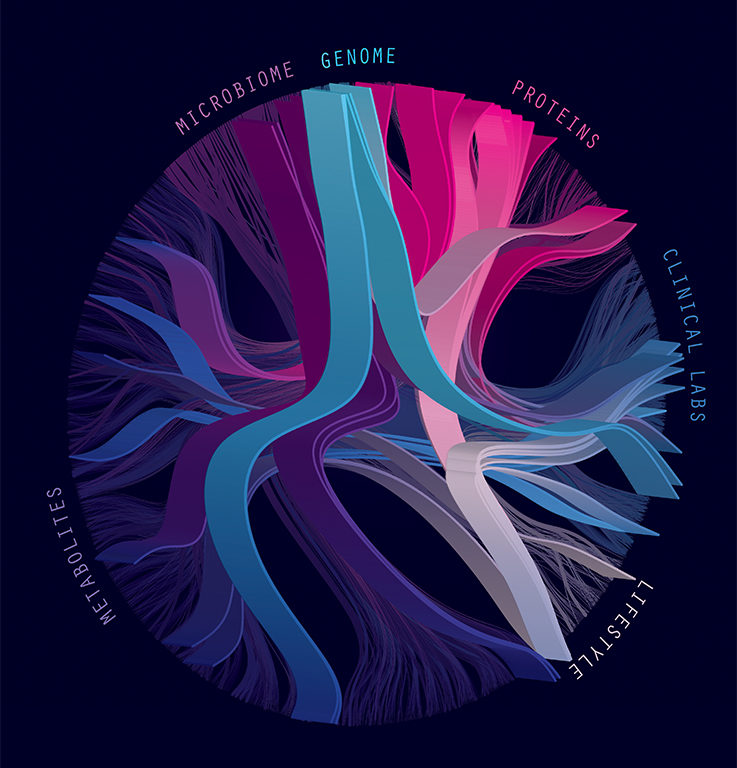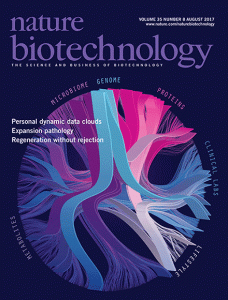ISB Artwork Featured On Cover of Nature Biotechnology
 isbscience.org/news/2017/08/14/isb-artwork-nature-biotechnology-cover/
isbscience.org/news/2017/08/14/isb-artwork-nature-biotechnology-cover/
The Institute for Systems Biology and Arivale “Pioneer 100 Study” is featured on the cover of August’s Nature Biotechnology. The artwork was created by ISB’s Associate Director of Communications Allison Kudla in collaboration with contributing author John C. Earls, software engineer in the Hood-Price Lab.

About the cover: A subset of statistically significant correlations are extruded in three-dimensional space. Price et al. describe the integration of whole genome sequences; clinical tests, metabolomes, proteomes, and microbiomes at three time points; and regular quantified self-measurements for 108 individuals over 9 months. They obtain thousands of cross-sectional interomic correlations, each represented by a line in the circular figure, to better understand health and disease. Image credit: Allison Kudla, John C. Earls (Institute for Systems Biology)





